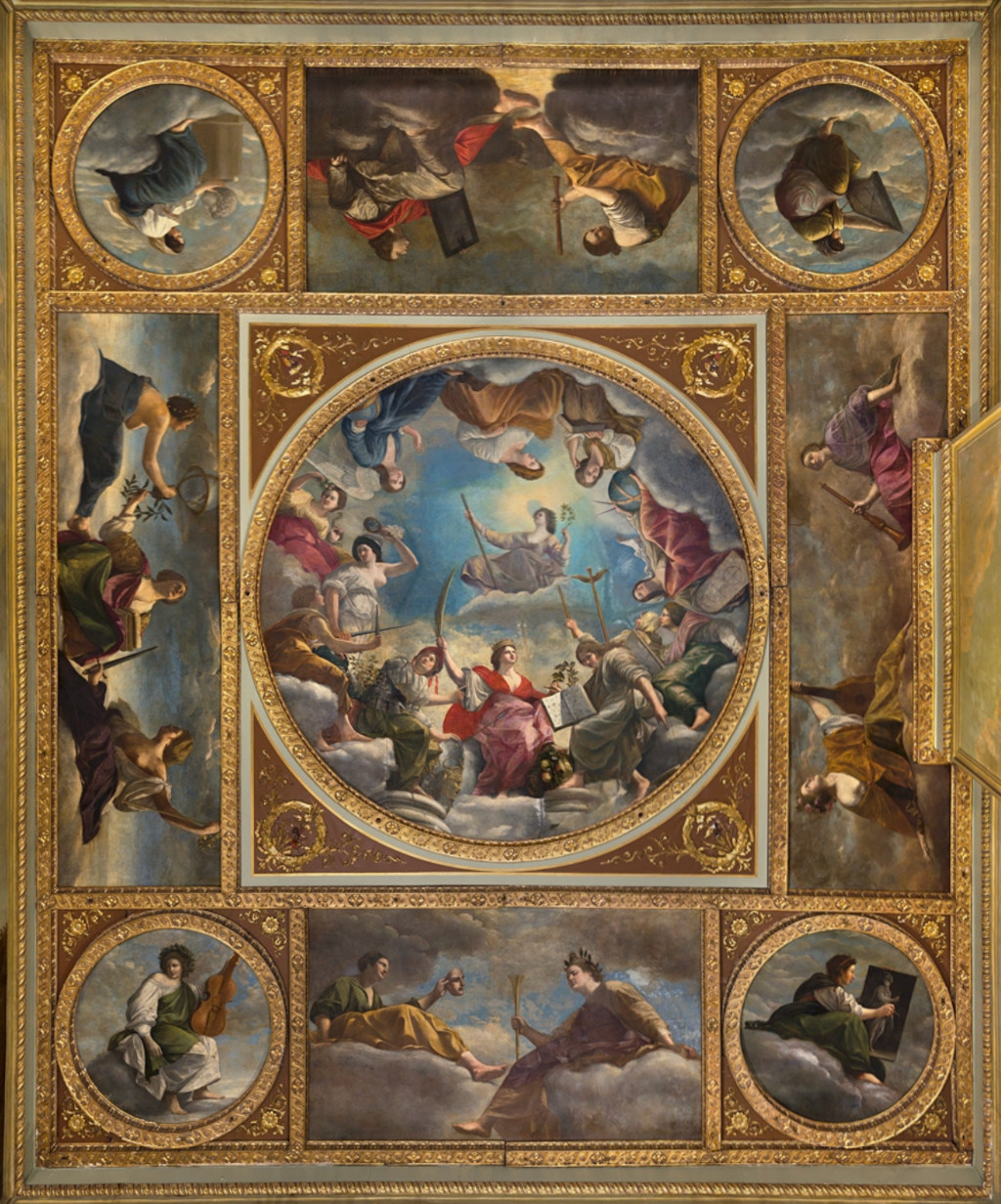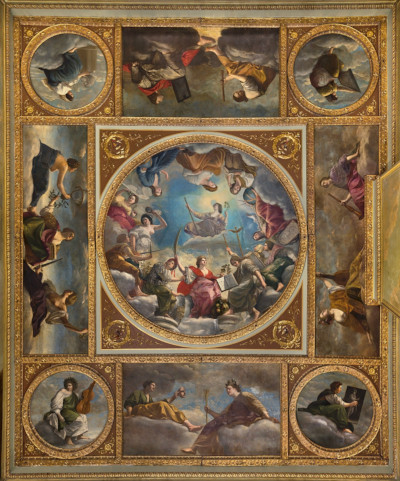Artemisia Gentileschi spent two years living in England in the 1630s, but relatively little is known about this period of her career. We do know that she collaborated with her father on this piece, though, titled An Allegory of Peace and the Arts.
Some have claimed this to be the most significant commission in Orazio's career, and with his daughter living in England at the time, he decided to invite her to help out. This complex commission, titled An Allegory of Peace and the Arts, can be addressed panel-by-panel, or indeed as a whole.
The display was intended for the Great Hall of the Queen's House, Greenwich, but was eventually moved to Marlborough House, elsewhere in London. It continues to raise awareness of both father and daughter within the UK, and is a popular art attraction for the many visitors to this city. We do know that Artemisia was regularly invited to the country, but generally declined in order to continue to build her career in Italy.
Commission
Several paintings by Orazio Gentileschi had already been acquired by British collectors and he was eventually persuaded to move to London in order to work directly for a number of enthusiastic patrons. His own work had risen in standard after studying the work of Caravaggio and he would eventually teach his daughter in much the same manner.
Within the 17th century there were a number of commissioned ceiling paintings produced in England, including one in the Banqueting House at Whitehall. This awkward, but breathtaking format was therefore becoming something of a fashion amongst the more wealthy patrons, and the Gentileschi family would be tasked with producing one for a prestigious home in Greenwich, South East London. The location itself already hosted a wealth of paintings and architecture, reflecting its important role in the history of this city, both in terms of culture and also naval expertise.
List of the Individual Panels
Most focus is given to the centerpiece, which is also the largest part of the arrangement. There are, however, a further eight panels to enjoy here which continue along the same theme and are placed along the sides, on the ceiling. The process of relocating this entire set of paintings would have been a considerable undertaking, and it is unsurprising that it has not happened very often.
- An Allegory of Peace and the Arts
- The Muses: Erato and Terpschore
- Apollo, the Personification of Music
- The Muses: Thalia and Clio
- Personification of Painting
- Personification of Sculpture
- Personification of Architecture
- The Muses: Urania, Calliope and Melpomene
- The Muses: Euterpe and Polyhymnia
It was common during both the Renaissance and Baroque eras to produce series of works in this manner, where a single theme would be tackled with multiple paintings or sculptures. The Life of Christ was one such theme, with individual artworks devoted to scenes from his life. Predellas was a term used to describe a strip of small artworks that might be included below a larger piece - Fra Angelico worked in this manner.
Large Image of An Allegory of Peace and the Arts
The stunning work created by father and daughter can only really be appreciated in person, but we have included a larger image of their work below, for you to enjoy. The overall project can be discussed panel-by-panel, with one large work placed centrally. Allegories were nothing new to Artemisia, who had completed several of her own, but she had not worked alongside her father for many decades by the time that An Allegory of Peace and the Arts came about.
 An Allegory of Peace and the Arts
An Allegory of Peace and the Arts




